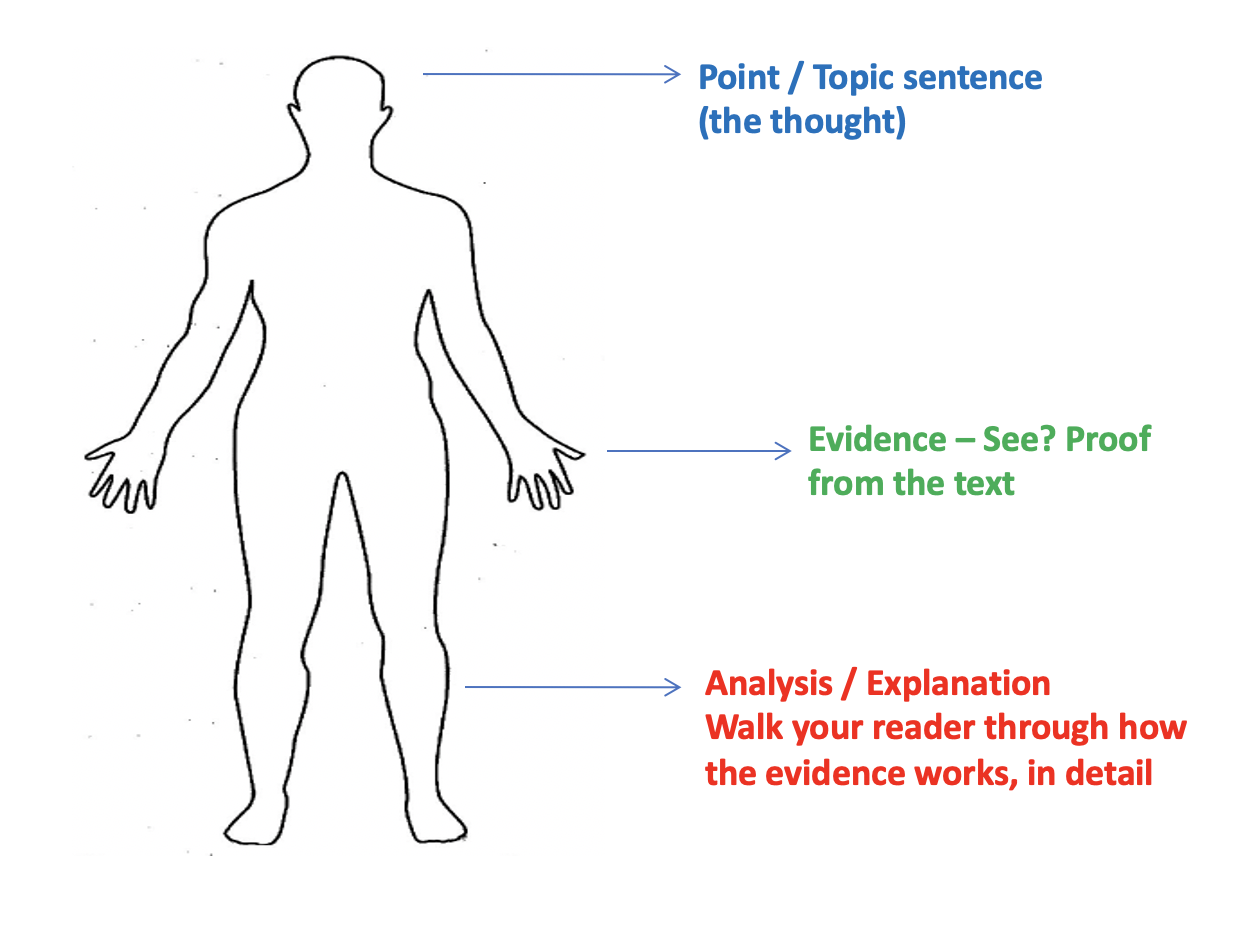SEE: Visual Cues for Teaching and Learning PEA
In academic writing, the PEA (Point, Evidence and Analysis/Explanation) is a commonly used framework for point construction. The basic format outlines a single analytical point, a key building block in the structure of written arguments. In essay-based subjects such as English, this early scaffolding gives analytical writing an effective, default structure, permitting students to organise their ideas – of increasing complexity – automatically on the page. Automating this structuring skill lightens the cognitive load for students during writing, and visual cues can aid in developing that automation.
PEA
One analytical point
Using a colour-coded approach to teaching PEA, in which the anatomy of the analytical point is highlighted, creates a visual stimulus that imprints the structure on the student’s memory. Using this method, the text of any model point can be coloured to show its breakdown:
The POINT (P) - a topic sentence, the point of the paragraph (blue);
EVIDENCE (E) - proof that supports the point (green);
ANALYSIS/EXPLANATION (A/E) of how the evidence proves the point (red).
Crucially, the basic PEA tool does not explicitly address its function as a building block in a broader argument. Where an essay is an analysed personal response to a text or topic, a single point or paragraph explains only one part of the argument; it explains one sub-topic and presents one section of what the essay writer sees from their perspective. Any essay topic must be broken down into sub-topics. These different aspects stack, like building blocks, to support the overall thesis or argument in an essay.
SEE: The stacking analytical point
It might be imagined then, that each paragraph contains one part of what the essay writer sees from their perspective:
The SUB-TOPIC (S) - the sub-topic being addressed in the point/paragraph;
EVIDENCE (E) - key proof that illustrates the point;
EXPLANATION (E) of how the evidence proves this point and supports the broader thesis;
A final (S) can denote the writerly action of crafting the point or the plurality of points - that several of these sub-topics must stack to form the whole essay structure.
In summary, the analytical point is effectively taught and learned by deconstructing the point itself, reconstructing it to form the whole, and then viewing that structure as part of a larger constructed argument.



